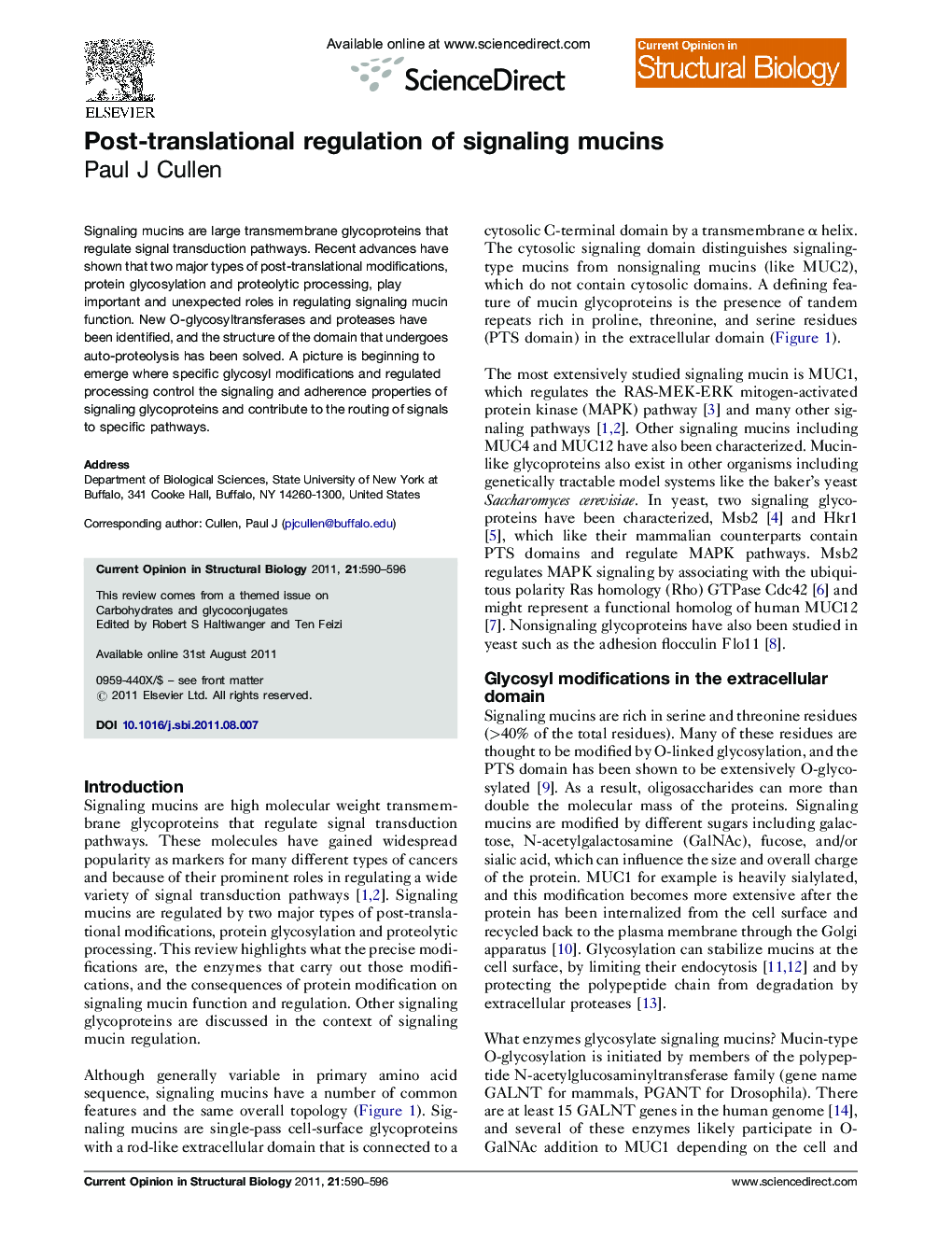| کد مقاله | کد نشریه | سال انتشار | مقاله انگلیسی | نسخه تمام متن |
|---|---|---|---|---|
| 1979234 | 1061670 | 2011 | 7 صفحه PDF | دانلود رایگان |

Signaling mucins are large transmembrane glycoproteins that regulate signal transduction pathways. Recent advances have shown that two major types of post-translational modifications, protein glycosylation and proteolytic processing, play important and unexpected roles in regulating signaling mucin function. New O-glycosyltransferases and proteases have been identified, and the structure of the domain that undergoes auto-proteolysis has been solved. A picture is beginning to emerge where specific glycosyl modifications and regulated processing control the signaling and adherence properties of signaling glycoproteins and contribute to the routing of signals to specific pathways.
► Signaling mucins are cell-surface glycoproteins that regulate signal transduction pathways.
► O-glycosyltransferases modify signaling mucins, including GALNT6 modification of MUC1 in breast cancer cells.
► Glycosylation influences the routing of signals to specific pathways.
► MUC1 is processed outside the cell by autocleavage and sheddases, and inside the cell by γ-secretase.
► The structure of the SEA domain by NMR illustrates the mechanism of autoproteolytic cleavage.
Journal: Current Opinion in Structural Biology - Volume 21, Issue 5, October 2011, Pages 590–596